We Drove Every Aston Martin From 'No Time To Die' And They Might Be The Best Bond Cars Ever
Over the course of the 24 official James Bond films up to now, 007 has driven everything from an aquatic Lotus to a remote-controlled BMW and even a Sunbeam Alpine hire car in Dr No.
Of course, it’s with Aston Martin that he has forged a particularly special relationship.
Ever since Sean Connery’s secret agent first drove the now legendary Aston Martin DB5 in the third Bond film, Goldfinger, in 1964, it has been Aston that we most closely associate as Bond’s “official” ride. In reality though it remains a relationship built largely on trust, with no money changing hands or long-term contracts in place.
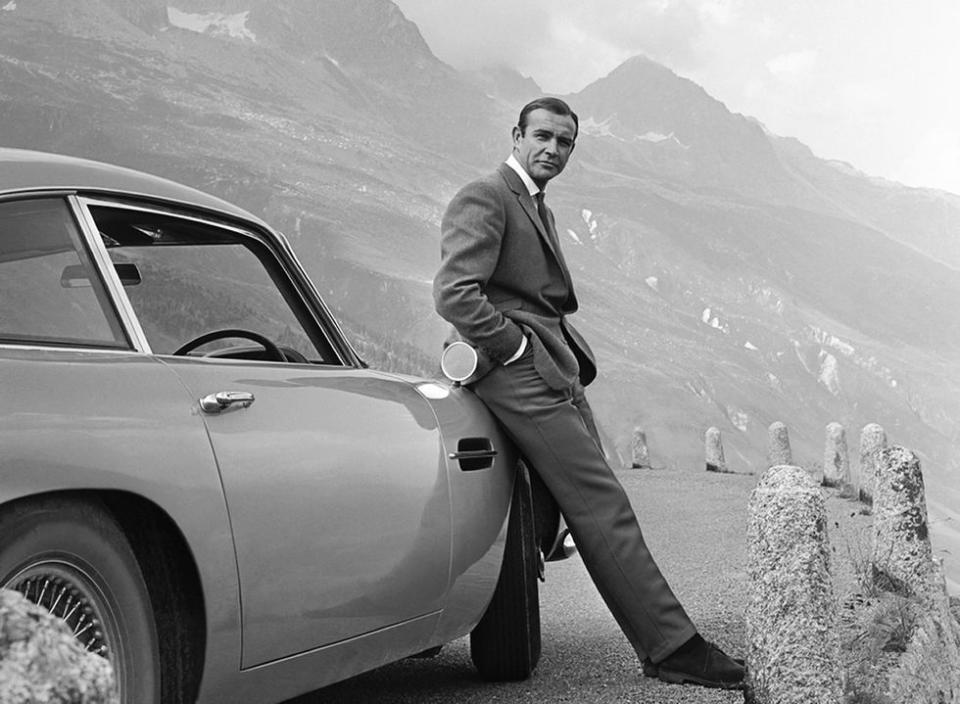
It could have been a different story too. At one point, the Jaguar E-Type was the preferred choice for Goldfinger but apparently Jaguar turned down the chance.
The story goes that Bond’s then special effects chief John Stears persuaded an initially reluctant David Brown (Aston’s owner and from whose name the ‘DB’ initials come from) to let them use the new DB5. And so film history was made.
The DB5 briefly returned in Thunderball, with a DBS then becoming the personal car of George Lazenby’s Bond in On Her Majesty’s Secret Service. A fallow spell followed through the Roger Moore years – unhappily he’s the only James Bond never to drive an Aston Martin - before a memorable comeback in The Living Daylights with the V8 Vantage.
Since 1995, Aston Martin have been in every Bond film, and by definition, every one of Daniel Craig’s appearances.
In Craig’s last outing as Bond, No Time To Die, the four Aston Martins that will feature must represent the strongest line-up of cars so far.
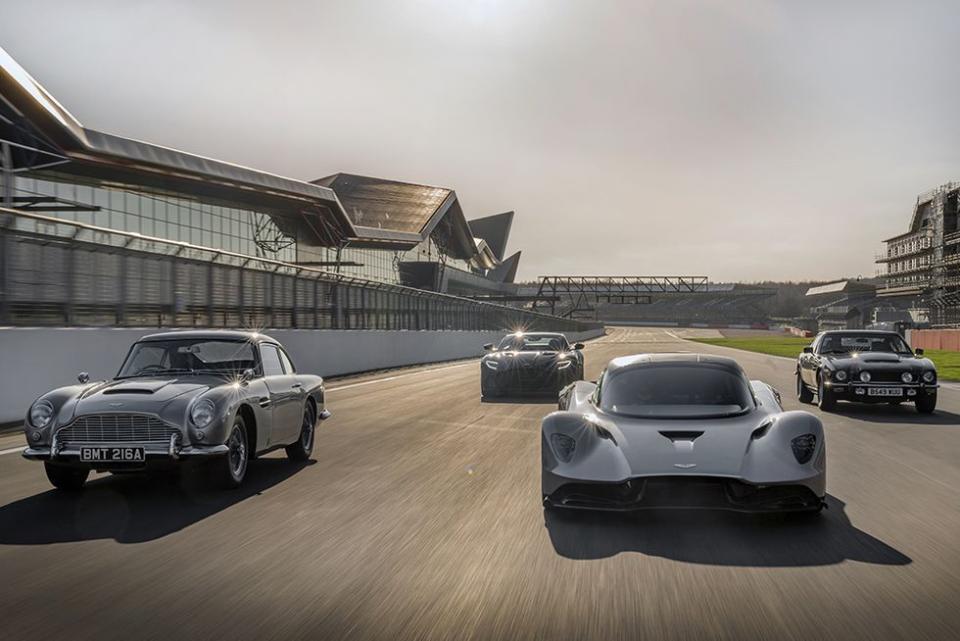
A DB5, a Vantage V8 (last seen in The Living Daylights), a current model DBS and the as yet unreleased Valhalla which won’t actually be on the road until early 2022. As Aston have themselves described it, it’s a “past, present and future” roll call that will make a fitting send-off for the current 007.
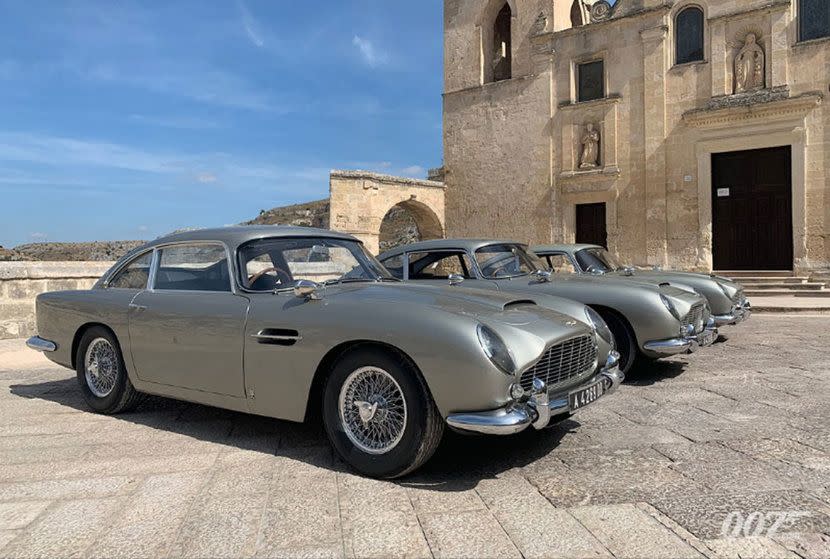
There's an unofficial fifth car too – a stunt DB5 created specifically for this film and that promises to be its stand-out star.
We’ve been inside all of them (the Valhalla isn’t drivable yet), driven four of them around the track and pulled together as many details as we can for each, but first, a bit of background on how the Aston Martin relationship with Bond producers Eon actually works.
Aston and Bond: how it works
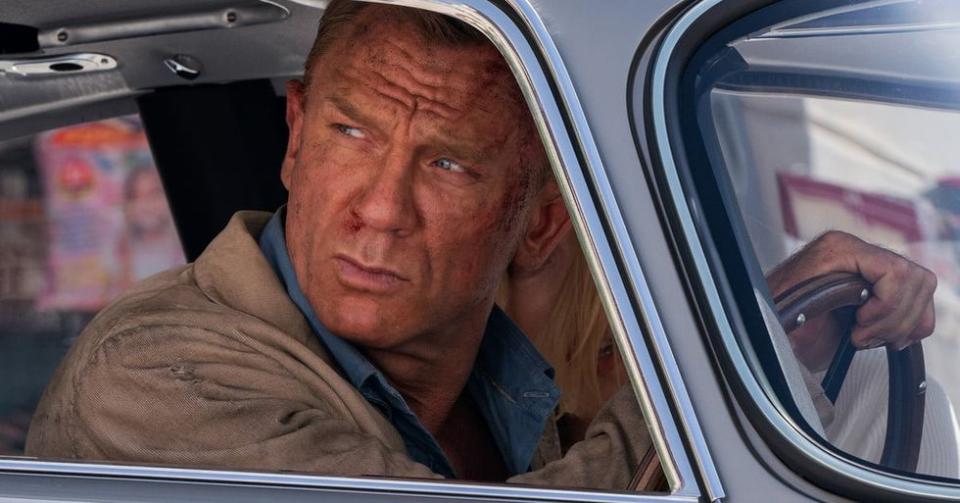
Aston’s involvement with the James Bond franchise is handled on a film by film basis.
At a point when Eon might have some loose ideas for the film’s plot or set-pieces - but no actual script – the team will visit the Aston Martin design studio in Milton Keynes to take a look at the current, vintage and future cars and begin a conversation around which ones they ultimately want to feature and how they want to use them.
It’s then up to Aston’s Special Operations team, headed up by Dave King, to deliver on the brief. In Skyfall that even meant creating an entirely bespoke model, the DB10, when Eon wanted something more extreme than was currently available. And it’s always against the clock.
“It’s sort of a negotiation, but if we say no to anything we risk them saying, ‘oh well, we’ll try someone else’,” says King. “So yeah you almost have to work miracles. I pride myself on the fact that my department can do that.”
And do that they did. At Silverstone last week, we got up close and personal with the entire line-up. So here’s the background story behind each of the Aston Martins which feature in No Time To Die.
Car 1: The stunt Aston Martin DB5 (2019)

The ultimate Bond car is reappearing for its 9th official appearance in No Time To Die (it has previously featured in Goldfinger, Thunderball, Goldeneye, Tomorrow Never Dies, The World Is Not Enough, Casino Royale, Spectre, Skyfall) and who can argue? It looks as good as ever after all.
But it is 57 years old now and for Bond 25, the biggest challenge of all for Aston Martin came when Eon requested no less than 8 dynamic original DB5s capable of extreme stunts, including the Matera chase seen in the trailer, plus another unrevealed sequence. And they needed them to be ready in six months.
Aside from the difficulty and expense in acquiring them, it soon became clear to the Aston team that the original DB5 simply couldn’t handle the demands of such a shoot, when cars need to deliver on cue, again and again. Any mechanical issue would hold up production and given the intensity of the driving, it was far too risky.
So Dave King suggested another solution – to build 8 bespoke replicas from the ground up. The first time such an undertaking had been attempted in Bond history.
Which means that while the car you see squealing through the trailer looks original, it was in fact ingeniously created at short notice by the Special Ops team, requiring much blood, sweat and knowhow to successfully hit the deadline.
They began by laser-scanning an original DB5 which the design team then smoothed off to make it symmetrical (because a 60 year-old hand made car simply isn’t).
The team then fitted a straight six naturally-aspirated engine (taken from a present day but unnamed model) producing circa 300Bhp with a 6-speed manual gearbox, mechanical limited slip diff and no driver aids. A modern suspension and brakes were integrated, plus some hefty dampers for the stunt work.
Then it was a case of detailing each one to make it look as authentic as possible, including some original DB5 spare parts from the original factory in Newport Pagnell.
“There was nothing fundamentally difficult in the engineering,” says King. “It was about doing it quickly.”
The result is an incredibly fun, responsive and capable car to drive, that visually you’d be hard-pressed to tell – at least on film anyway – is not an original.
Even the Aston team were surprised by just how well their end product delivered. And Eon were understandably delighted, as there were times when they didn’t think it was going to come off.
“By some happy chance really we’ve created something that’s awesome to drive,” says King. “We went from thinking ‘can we make something that will stumble through the film just about ok and get away with’ to realising we’d created something bulletproof.”
The 8 cars were then assigned different roles. Two became ‘pod’ cars which feature a stunt driver controlling the car from a pod on the car’s roof while Daniel Craig sits in the cabin below. Two more were ‘gadget’ cars, featured in the machine gun scenes. And the other four featured specific damage from the various stunts and smashes.
Integral to the shoot was Daniel Craig’s stunt driver Mark Higgins. He’s been working on Bond since Quantum of Solace, and it’s him razzing the stunt DB5 along the cobbles of Matera and doing the machine gun donut at the end of the trailer. A move he actually gives joint credit to none other than Daniel Craig himself.
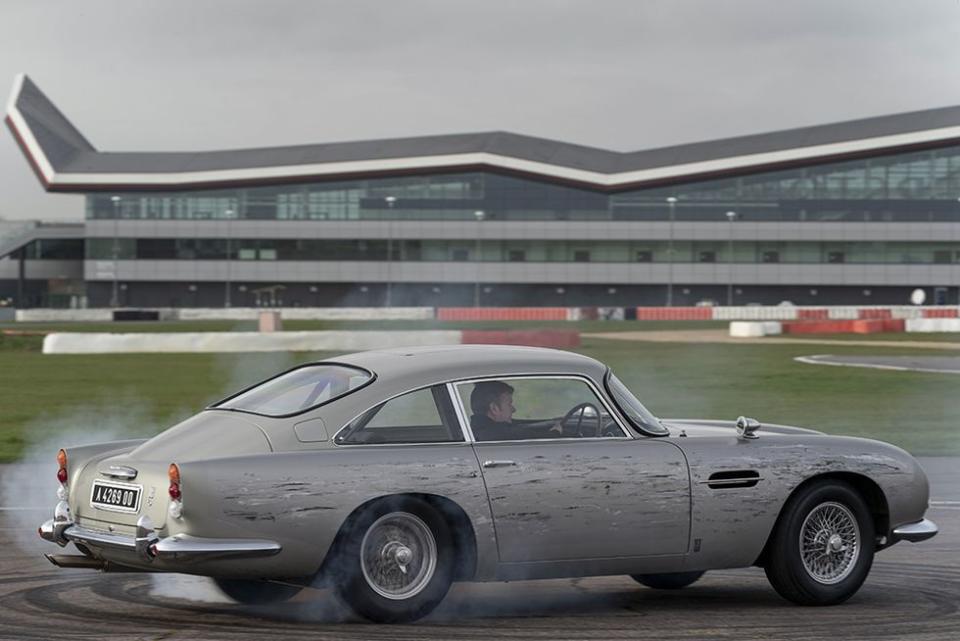
At Silverstone, Higgins also showed me first-hand what he can do in the stunt DB5, with a “hot” passenger lap featuring more slides than a playground. Let’s just say I regretted having two portions of lasagne before we went out.
Car 2: The original Aston Martin DB5 (1963)

Two original DB5s were also used in No Time To Die for the static shots where the car needs to look pretty. Not hard really given that incredible design from Italian coachbuilders Carrozzeria Touring Superleggera.
Eon actually has its own DB5 which are used for this purpose. It goes without saying that these originals now go for serious sums; a promotional car used on Thunderball sold for £5.2m at auction last year.
And yes we got to drive one: a 1963 model - its first year of production - in the Bond classic colour of silver birch.
When it launched it was only a slight upgrade on the DB4, almost an interim car to get something out before the delayed DB6 was ready. Built as a genuine grand tourer it is probably better suited to cruising around the Amalfi coast than Silverstone in February.
With no power steering, it requires some force to get it round a track but hearing a tyre squeal, however feeble, when driving an Aston Martin DB5 has to be as close to living out a boyhood fantasy as it’s possible to get.
The main difference between this and the DB4 is the all-aluminium 4 litre straight six engine producing 282hp and taking 8 seconds to get to 60mph.
In its day, the interior was the most luxurious Aston had ever created featuring electric windows, aircon, wool carpets, reclining seats and even a fire extinguisher.
Only 1023 were made in just two years of production, before the DB6 came in – a car which for many is a more polished and better version, complete with very welcome power steering.
But only the DB5 has the Bond connection, which has since helped make it unofficially ‘the most famous car in the world’. It's an A-lister in itself. To see one and drive one is the automotive equivalent of being starstruck.
Car 3: Aston Martin V8 Vantage (1987)
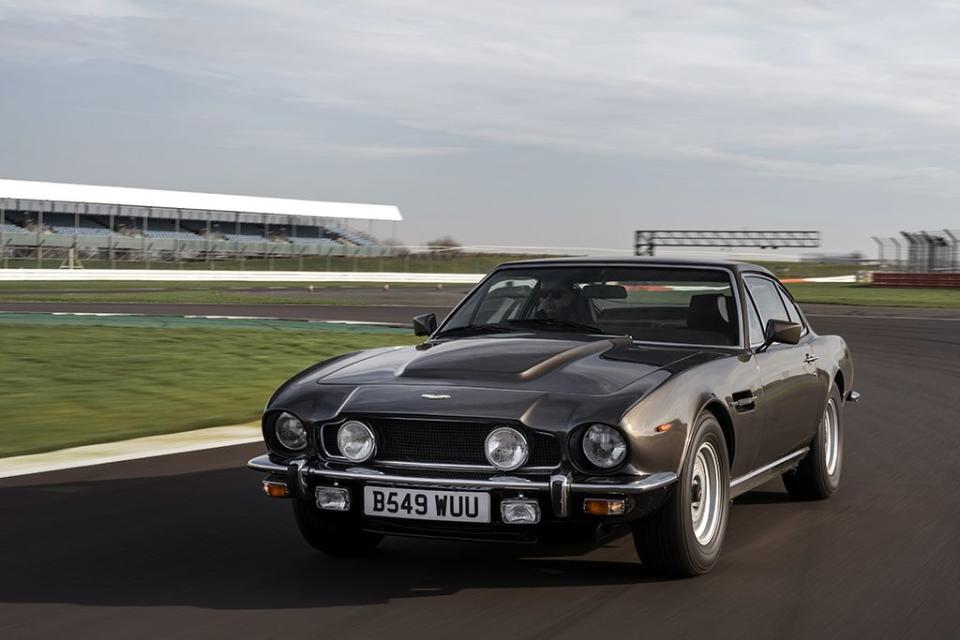
Thirty three years on from its first and last appearance as Timothy Dalton’s ride in The Living Daylights, in No Time To Die the V8 Vantage will most likely appear when James Bond picks it up from storage and drives it in London (teaser shots feature it both parked and on the road in the capital) and either Scotland or Norway.
Dalton’s car started as a Volante (convertible) but was modified into a winter hardtop by Q’s team and featured gadgets including missile launchers and a self-destruct button. Always handy when you simply cannot find a parking space.
It was introduced in 1977 as Britain’s first supercar, with American-influenced muscle car looks and power - 390hp from a 5.3 litre V8, capable of hitting 170mph. It continued in production as late as 1989.

At Silverstone, we drove the actual car from No Time To Die - a 1987 model in stunning Cumberland Grey. As a 10 year-old when The Living Daylights came out – the first Bond film I saw in the cinema - this car has had a personal pull ever since. Surprisingly its aggressive looks on film seem more refined up close.
It’s heavy though and I soon discover that corners need to be taken with some care. Ideally phoned ahead in fact. It’s also hard to find the power coming out of the corners.
When it comes though, there is still some serious grunt and its capabilities in a straight line are certainly on show down the main straight. Driving it after the 2019 DBS was probably never going to reflect well but it remains a car with real presence and charm.
Word is it could also be a good time to invest as some of those kids, like me, who grew up with it now have the spending power to get one, unlike me. Good ones are available at around £150k and likely to start moving up, perhaps more so after its latest comeback.
Car 4: Aston Martin DBS (2019)
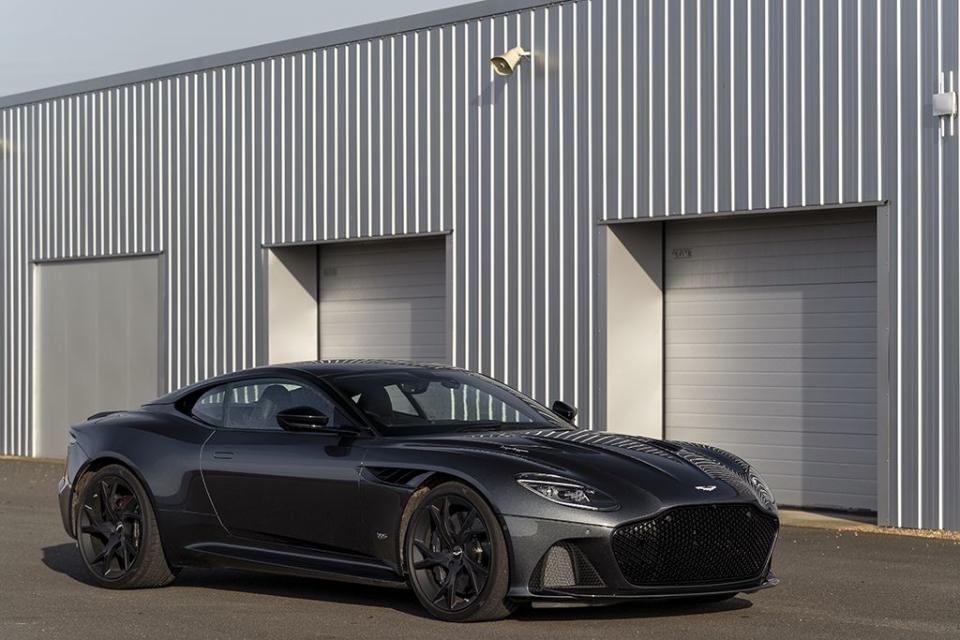
Previous versions of the DBS have appeared in Her Majesty’s Secret Service, Casino Royale and Quantum of Solace but this 2019 DBS Superleggera is a serious machine with capability beyond pretty much any Bond car that has come before.
It’s also the current £225,000 flagship model which means it will be available to buy during the film’s release and Aston are looking forward to finding out if there might be a Bond bump in sales.
With flawless looks which embody the modern era of Aston Martin, it’s officially a super grand tourer with more power than any previous production Aston and more than it’s frankly sensible to wield, unless you happen to be a trained super agent.
A 5.2 litre twin-turbo V12 produces 715 horsepower, capable of a top speed of 211 miles per hour, and a 0 to 62 time of 3.6 seconds.
With impressive handling and effortless thrust at high speeds, spending time with it on track you can see exactly why it would make the perfect high-speed pursuit car.
Having driven it on the same morning as the DB5 and V8 Vantage, this DBS is a breathtaking contrast packed with modern technology and performance engineering that helps you pretend you’re a much better driver than you actually are.
Those that know have been tight-lipped on its appearance in Bond 25 but we can only hope that it’s put to appropriate, and memorable, use.
Car 5: Aston Martin Valhalla (2022)
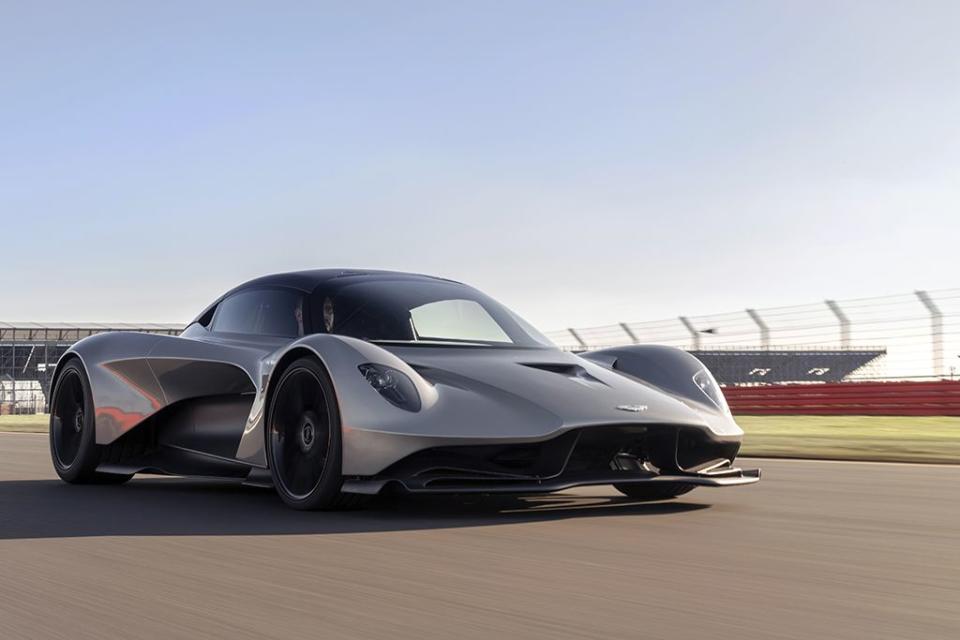
Given the project code ‘003’ when it didn’t yet have an official name, Aston’s unreleased hypercar already had some strong Bond pedigree even before Eon even decided it wanted it to feature in No Time To Die.
As it was, this car was a very late addition. Just three months before filming, Eon told the Aston Special Operations team “if you can get us a drivable Valhalla then it will feature in the film”.
For Dave King, in some ways this represented an even bigger challenge than the stunt DB5. A drivable Valhalla didn’t exist after all. They managed it of course, though disappointingly, in the film’s final cut it will only feature in a static shot.
The car itself is in the same mid-engined family that sees the track focused Valkyrie as the halo and the Valhalla as its more “everyday” version - for want of a much better word. For this car is anything but everyday. Costing £1m only 500 will be made, with customer deliveries planned for the first half of 2022.
The idea of launching a mid-engined car for the first time in its history is a strategic move from Aston’s CEO Andy Palmer to put the brand directly up against rivals Ferrari and McLaren, offering different models in different categories, allowing more cars to be sold without upping production and losing exclusivity.
Up close, it looks more Batman than Bond with its incredible wrapped design, which was developed in collaboration with Aston’s F1 partners Red Bull Racing, whose expertise in aerodynamics is clear.
It says a lot that I couldn’t even find the door handle. Not much good if you had some henchmen on your tail.
Given their distinctive design, outrageous speed and the fact it is only playing a quick cameo in this film, don’t be surprised if the next James Bond film features one of the mid-engined models in a far more significant set-piece.
Either way, it will be hard for Aston Martin or Eon to better the line-up from No Time To Die. It’s certainly a four car garage worth retiring for.
No Time To Die is released on 3 April

Like this article? Sign up to our newsletter to get more delivered straight to your inbox
You Might Also Like


